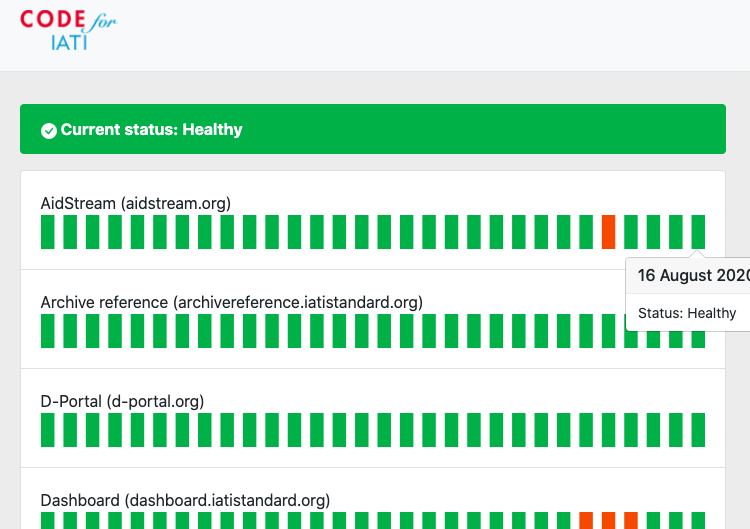A status dashboard for IATI services
Sometimes, web services break. They stop working. For all sorts of reasons.
A server fails; Some piece of data gets corrupted; something unexpected causes a blockage in the tubes.
These incidents are unpredictable, and can cause disruption for service users. So it’s common for online service owners to automatically monitor the status of their services, as well as provide a public dashboard that shows the current status. This ensures issues are caught as early as possible, and incidents are communicated and dealt with transparently.
Facebook has one. Twitter has one. Dropbox has one. Github has one. In fact: check it yourself. Think of an online service, and then do a search for their status dashboard. Chances are, you’ll probably find one. Technical users of these services that notice an issue will frequently check the status dashboard as their first port of call. If the problem has been flagged there, it’s clear it’s a known issue and is in hand. If it hasn’t, it might be worth investigating further, or alerting the service to a possibly uncaught issue.
IATI provides a number of services, but there’s no central status dashboard. So we had a go at making one. It’s here:
It’s based on open source code created by the IATI Secretariat’s technical team a number of years ago. This code runs automated tests on various IATI services, to check they are performing as expected. For example:
- It checks the datastore returns CSV when requested
- It checks the dashboard appears to have been updated recently
- It checks the validator correctly identifies some invalid XML as such
We took this code, fixed a couple of bugs (#144, #147, #148, #149), scheduled it to run daily (though running more frequently would be preferable) and added a public website so anyone can see the current status. We also added an RSS feed, and a badge that shows the status right now:
It’s easy enough to extend with new checks. For example, d-portal tests are minimal, and there are no tests in place for the new datastore or new validator. We think this is a fundamental service that should be provided by all service providers, to catch problems early, and inform users of known issues quickly. We’d be very happy for the IATI Secretariat to adopt this, if they (and their users) find it useful!
